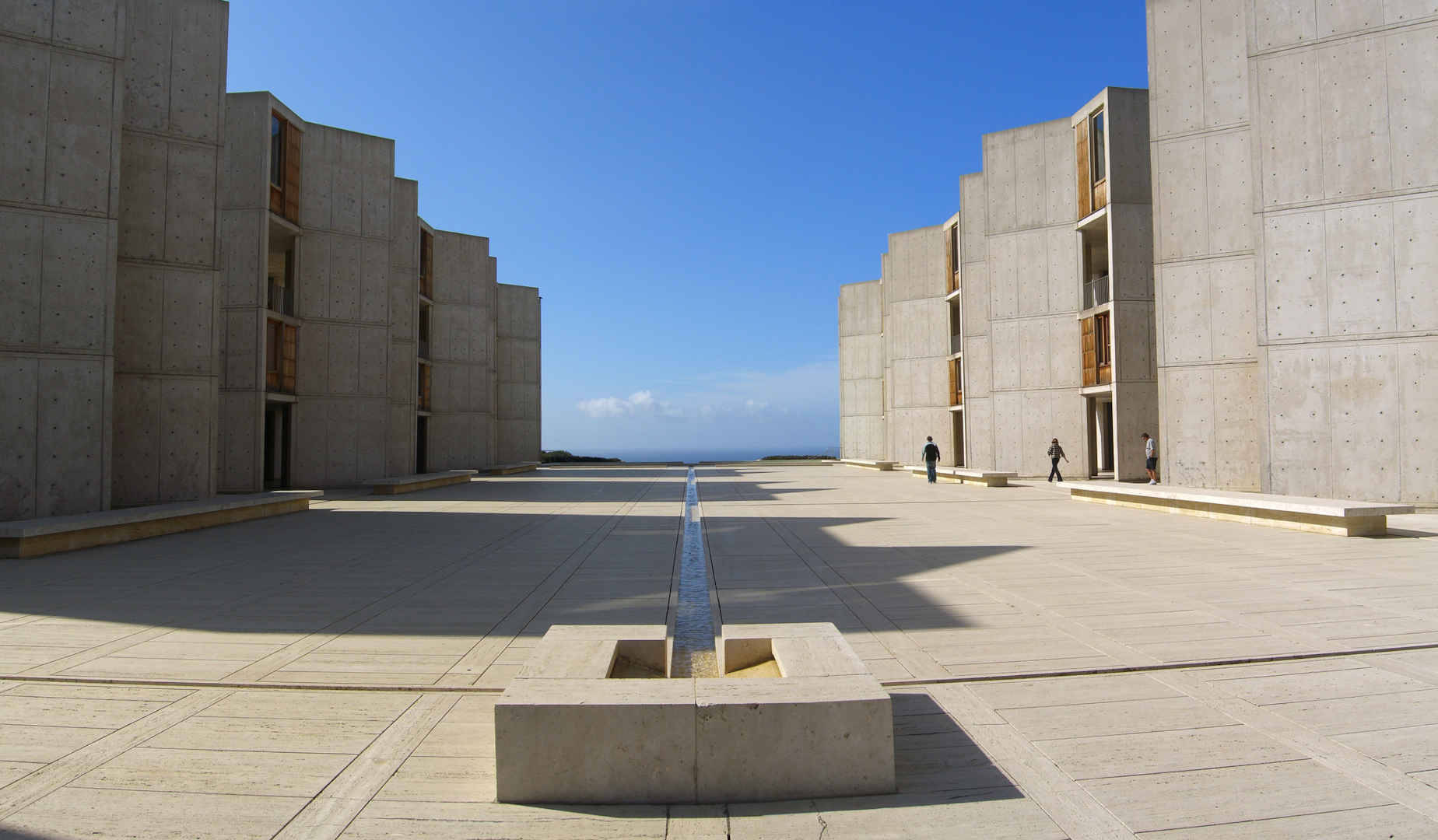Blog
Article

Jan 8, 2022
Scottie Elliott
It’s no secret that our surroundings impact our mood and even our mental health. Those in dark spaces with little to no access to natural sunlight tend to be more depressed and anxious. But the opposite psychological effect happens when given access to open, light-filled and tidy spaces. The difference can be as stark as standing in a small closet versus standing on the edge of the Grand Canyon.
Imagine squeezing yourself into a linen closet and closing the door. At first, you may be okay, but eventually, the darkness will consume you and may possibly make you feel trapped, isolated, and alone. The resulting stress would ultimately derail your sense of comfort and safety. But on a cliff staring into the Grand Canyon, you may experience openness and awe, which can elevate your mood and infuse you with wonder.
This is an exaggerated example of what actually happens when we’re surrounded by dark, cluttered spaces as opposed to light-filled ones. It can take a toll on our mental, emotional, and even physical health. Even if the interior space that you’re occupying is bigger than a linen closet, the truth is that your physical environment can directly influence how you feel and think.
According to the U.S. Environmental Protection Agency, Americans spend, on average, 90% of their time indoors. This means that our physical environment is largely artificial. Humans are part of the natural world, so being in an artificial environment can impact our sense of self and wellbeing.
This is why many architects and designers are exploring the discipline of neuroarchitecture. Neuroarchitecture is an application of neuroscience. As its name suggests, neuroarchitecture focuses on built environments, specifically how these spaces affect thinking, mood, and behavior.
Interestingly enough, the link between cognitive performance and architecture was first discovered by Dr. Jonas Salk, an American virologist and medical researcher who created the polio vaccine. He pursued a cure for years in his dark, dank basement laboratory at the University of Pittsburgh. At wit’s end, he decided to travel to Assisi, Italy, and spent an extended period of time at the 13th-century monastery, Basilica of San Francesco d’Assisi. It was there, among the light-filled cathedral and the gothic arches and columns, where he found the solution to create the polio vaccine. He credited the basilica’s design for igniting his cognitive abilities.

Front view of the upper Basilica of St. Francis of Assisi, Image Courtesy of Blackcat, Wikipedia
“The spirituality of the architecture there was so inspiring that I was able to do intuitive thinking far beyond any I had done in the past. Under the influence of that historic place, I intuitively designed the research that I felt would result in a vaccine for polio. I returned to my laboratory in Pittsburgh to validate my concepts and found that they were correct.”
Upon realizing the power of architecture to inspire and stimulate, Salk approached the world-renowned architect Louis I. Kahn to create the Salk Institute, a research center that uses design to facilitate inspiration for ongoing scientific pursuits.
In the years that followed, other scientists have discovered the connection between environment and wellbeing. Notable figures include Fred Gage who, along with John Eberhard, founded the Academy of Neuroscience for Architecture, a nonprofit organization focused on promoting and continuing to discover the links between neuroscience and the built environment.
The article Neuroarchitecture: Intelligently Designed Buildings describes how architecture can affect human behavior.
Temperature – The role that room temperature plays in our cognitive performance. Research shows that warmer environments tend to have a negative impact on cognitive performance, with complicated tasks being adversely affected.
Lighting – Lighting can affect mental health. Poor lighting has been linked to increased depression and decreased reaction time. Humans need the balance of light during the day and darkness during the night to maintain circadian rhythm.
Plants – Being surrounded by foliage and natural materials can impact our ability to think creatively. Biophilic design uses organic shapes and elements to reduce stress and increase mental engagement. Learn more about biophilic design and its effects on human health and well-being here.
Color – Color has long been observed to affect human behavior and thinking. Dating back 4,000 years, color was used by ancient Egyptians as a treatment for ailments. Sunlight was projected through color crystals for healing purposes. The ancient Chinese also associated colors with health. Modern science affirms that colors do impact our emotional and cognitive processes. Certain colors can improve productivity, while others can inspire calmness.
Scents – More than any other sense, our sense of smell is most closely tied to memory. A faint smell can instantly transport you to a once-forgotten time and place. It can also call forth specific emotions. Scents are the only sensations that can travel directly to the limbic system, the part of our brain that processes emotion and memory. This is why memories triggered by scent feel more emotional and visceral. In neuroarchitecture and design, scent can be used strategically to promote relaxation and well-being. Think of planting a garden of lavender or gardenia outside of a building and how that may evoke positive vibes to those who enter and exit from that space.
Geometry – Architecture that makes sense of rounded edges, instead of sharp lines and angles, tends to have a more relaxing effect on the human psyche.
We recently sat down with Alina Osnaga, built environment experience designer and leading expert in neuroarchitecture, for a discussion on the relationship between humans and buildings.
Key Takeaways From Our Talk With Alina Osnaga
On the disconnect between the study of neuroarchitecture and the practice of neuroarchitecture…
According to Osnaga, we’re still in the beginning stages of neuroscience in the architecture practices. The bigger architectural firms have started to invest in their own neuroscience or user experience research departments, but it’s less prevalent in smaller studios. For centuries, designers worked to create buildings in which humans can live, and thrive. They used their knowledge and educated intuition to create environments that will influence humans. It wasn’t until recently that designers started to question what is the “dialogue” between humans and buildings, and what is the human response to environmental stimuli. With today’s technology we are making good progress in understanding some of the aspects, but there is still a lot of unknown.
On the role of technology in neuroarchitecture…
Because it’s still a new discipline, neuroarchitecture research is expensive. However, the use of virtual reality (VR) technology has made research more affordable and accessible. For example, in simulations, researchers can create two versions of the same building—a process that wouldn’t be feasible in full-scale reality. VR goggles allow people to interact with the environment in a way that’s really close to technology. And the use of this technology is set to increase over the next year as architects and designers become less fearful of what technology has to offer. Virtual reality and augmented reality don’t make us obsolete, but rather help us create, test, and edit designs at lightning-fast speeds.
On whether architects will eventually build for virtual reality in addition to actual built environments that we physically experience…
It’s wild to think that we’re at a stage now in human evolution to create entire worlds that we can experience virtually. Virtual space is a new territory for architects to explore. As in the real world, the virtual world will need content to entertain their users: Experiences such as amusement parks, virtual concerts, virtual schools, etc. Designers are in the position to create digital assets that people can buy afterwards: cities, buildings, furniture, etc. Since we’re at the beginning of creating the metaverse and exploring what it can be, there are so many unknowns, such as who will own the metaverse and how will you buy and sell properties in virtual reality? It’s also worth pondering how we’ll design virtual properties that positively impact our emotions and sense of belonging.
On how architecture can benefit people that suffer from mental health issues…
Implementing principles of neuroarchitecture has positively impacted those dealing with past trauma. Osnaga volunteered for a project in downtown Detroit that worked with homeless veterans who suffered from PTSD.
She recounts that Military veterans face particular risks for experiencing traumatic events and eventually developing post-traumatic stress disorder (PTSD), caused by the character of their service. The various causes for PTSD, include abuse, assault, or natural disasters, but for military veterans, it is most commonly associated with warfare.
“A meta-analysis research estimates that the incidence of combat-related PTSD among military personnel and veterans ranges from 1.09% to 34.84%.” (1) Another 2017 study involving 5,826 US veterans showed that 12.9% of them were diagnosed with PTSD. This is considered a very high rate if compared to the incidence of only 6.8% among the US general population. (2) This can lead to anxiety, depression, and isolation from friends and family. The National Veterans Association applied elements of neuroscience into a green space, particularly biophilia along with repetitive patterns to evoke a sense of mental calmness. Veterans were able to walk through the labyrinth and find solace and structure in the repetitive patterns of the greenery.
On the potential impact of neuroarchitecture on schools…
One place with a distinct need for neuro architectural design learning environments. .It is hard to build schools that support mental and physical health and well-being. Even in neighborhoods that have plenty of resources. Too few policy makers consider the research showing that nurturing, nature-filled school environments improve mental health, lower crime rate and bullying, give a sense of safety and belonging and increase(improve) academic success.
Together with her team, Osnaga presented a study design poster at ANFA Conference 2021 “The impact of enriched environments in developing a playful experience” The team hypothesis was: Play learning experiences, characterized by joy, meaning, active engagement, iteration, and social interaction, facilitate positive behavior. They also hypothesize that children who attend an elementary school with enriched environments, will have better learning outcomes, which will be sustained by neuro-physiological changes that correlate with the childrens neuroplasticity.
During their research review, they analyze Bill Browning work.
Bill Browning, a partner at Terrapin Bright Green, is at the forefront of the biophilia movement. His team designed an amazing school in London using biophilic elements. The design of the school carefully uses nature to reduce overstimulation. For example, as an alternative to the playground, students have the option to hang out in a cozy seating area made of natural wood.
Here’s an example of biophilic design principles in action at the Garden School in Hackney London. Designer Oliver Heath sought to create a calming and restorative space for children with autism. The design team created hexagonal, cocoon-like shapes that enable kids to feel safe.
Heath posits, “There are all sorts of ways that biophilic design can be introduced into educational spaces. It’s not about spending lots of money. It’s simply understanding and recognizing the opportunities that we have, as designers, to improve that connection to nature, be it a direct connection, be it indirect in the use of materials, but also understanding our human spatial needs of the spaces that we’re living and working in.”
Final Thoughts
There’s much left to discover about neuroarchitecture, biophilia, and how interior design impacts human behaviors and mental states. However, architects and designers are beginning to use this emerging discipline to design human centered spaces, as well as user experiences focused spaces.
1. Xue C., Ge Y., Tang B., Liu Y., Kang P., Wang M., and Zhang L. (2015). A meta- analysis of risk factors for combat-related PTSD among military personnel and vet- erans. DOI: 10.1371/journal.pone.0120270
2. Muller, J, Ganeshamoorthy, S,and Myers, J. (2017). Risk Factors Associated With Post-Traumatic Stress Disorder in US veterans: A Cohort Study. PLoS ONE 12(7): e0181647.
